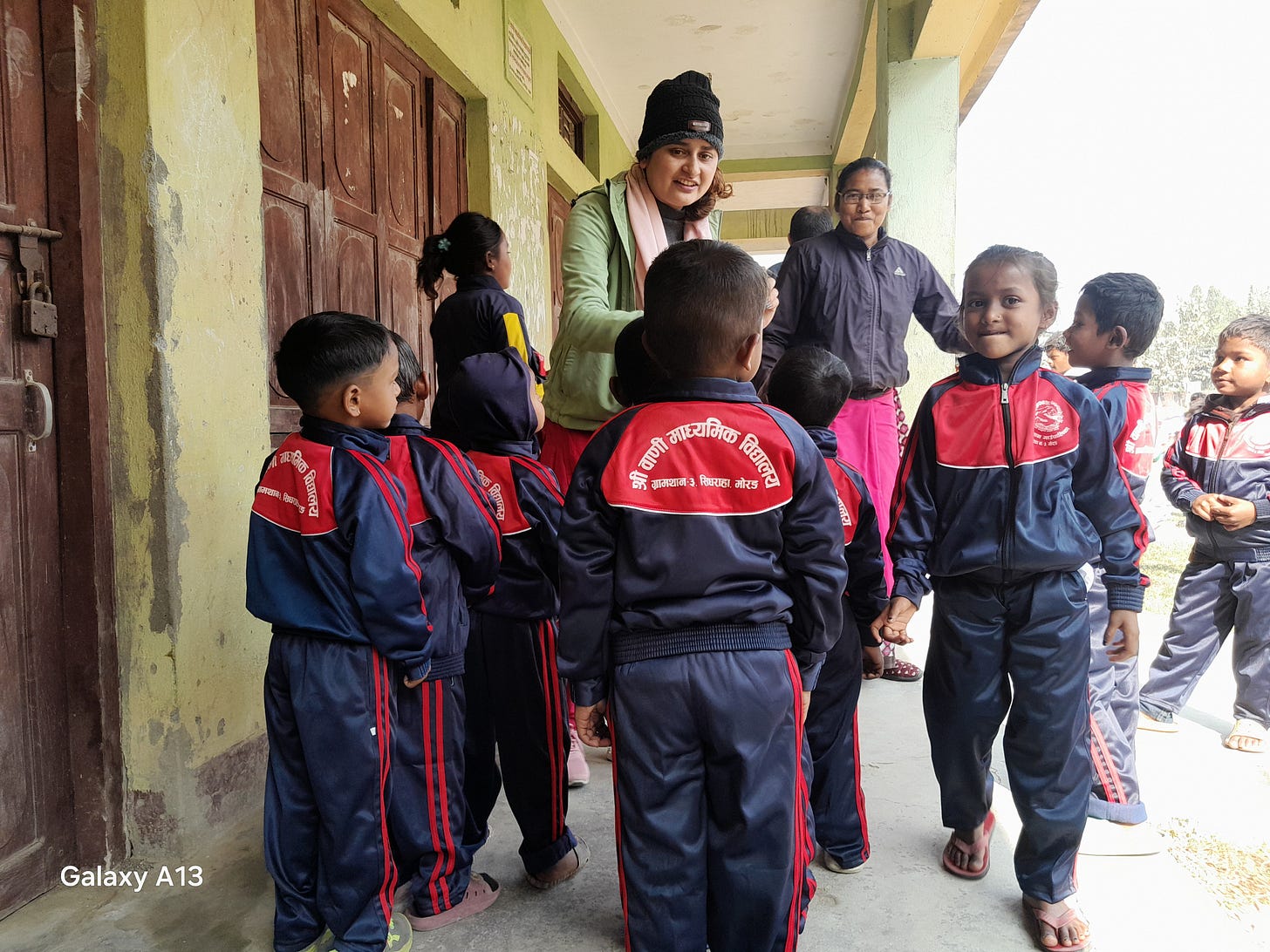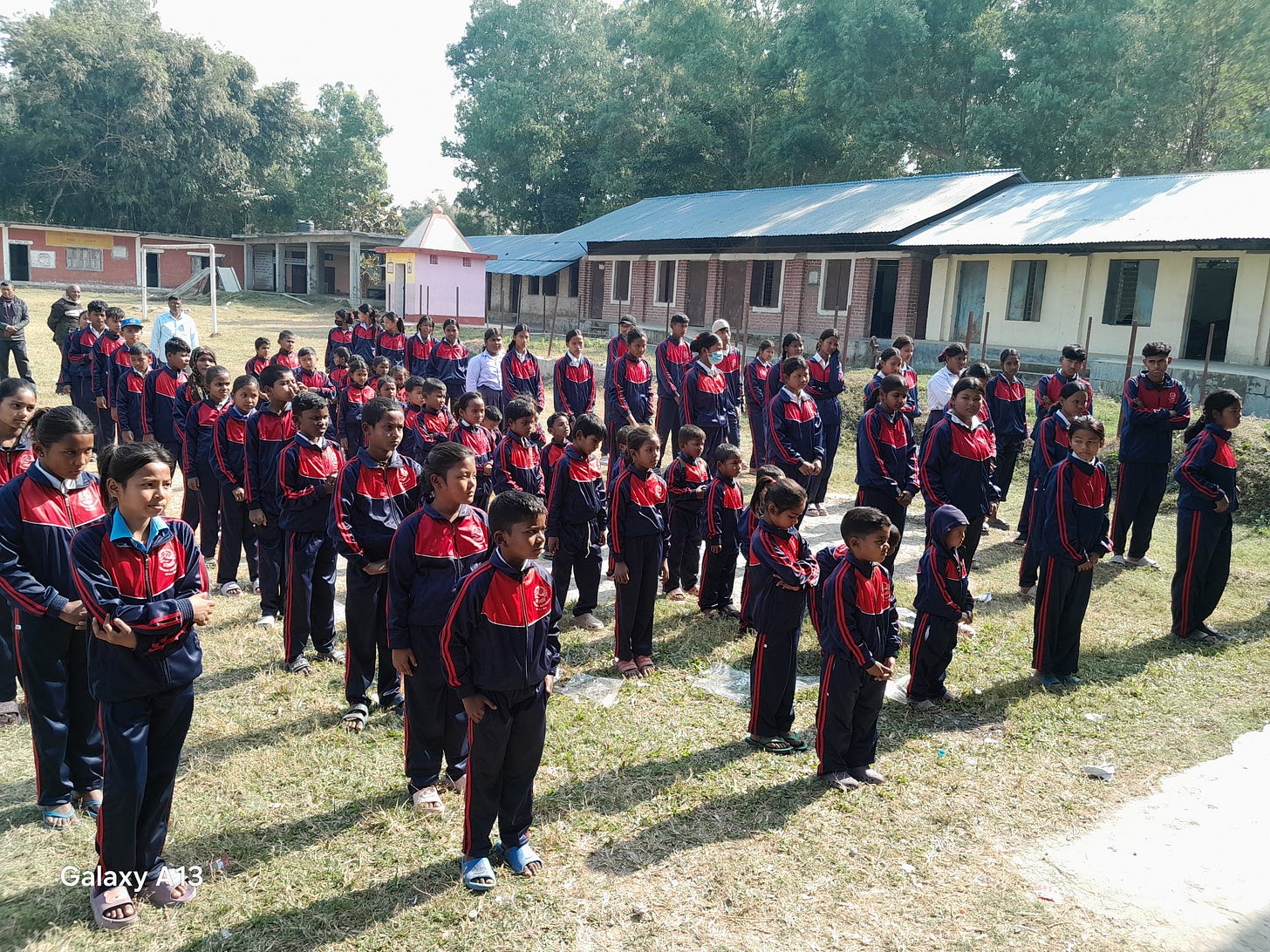Poor English
About seventeen years ago, on my first day as an English teacher at Annapurna Higher Secondary School, Dilpa, Bhpjpur, at first, I gave class 9 students some very common questions in order to be familiar with their level of competency which was essential before commencing lesson.
More than two third of students couldn't spell and punctuate their name correctly. Their handwriting didn't discriminate giraffe letters, tortoise letters and monkey letters in shape, size and slant. They made no visible distinctions between ‘h’ or ‘n’, ‘b’ or ‘d’, capital 'C' of small 'c', capital ‘S’ or small ‘s’, and so on. Situation in class 10, who were to cross iron-gate, was same.
I had to complete the course before the final examination which was in the next month. I decided to start from their handwriting and began from alphabets but soon I realized that they were feeling being insulted by imposing them to write just A, B, C… as nursery level. Then I ask them to buy four liner papers, used for beginners. I made them practice writing ‘A quick brown clever fox jumps over the lazy dog’ which contains all 26 alphabets. Though they each messed a number of pages, only few could imrpve.
Seven years later, the situation at my second school Siddheswar HSS Dawam was no different although it was one of the popular school in the area in terms of the number of students who passed the SLC. There, in class 8, out of 68 students 40 had punctuated their name wrongly in second terminal examination answer sheet. No students of class 4 had written their name correctly. In class 9 more than 90 percent out of 109 students could write simple paragraph.
Now I have been in another school. It is Bani Secondary School at Gramthan rural municiaplity, Morang district. Stuedents are ethnic homogeneous Tharus and Terai Dalits in minority. The academic condition of students is ever worse than in previous schools, that is Pahad. or Hilly region.
In fact, that was not students' fault but was caused by the teachers who taught them at the beginning. Situation still remains the same in most of the Government or Community schools in Nepal where children from poor, powerless and under privileged families study.
Poor base
A mother asked her newly schooled child , :What did you learn at school today ?" The child replied, "I learnt to write". Further the mother asked, "So, what did you write ?" The child replied, “I haven’t learnt to read yet”. This joke reveals the reality of existing primary education in Nepal’s government schools. A recent study has stated that 30 percent of grade 2 students can’t recognize Devanagari script bahrakhari (the alphabets), 9 percent remains in grade 4. Similarly, 70 percent grade 4 students can’t read Nepali paragraph correctly. If so, how poor may be the condition of English? English is their second language and, it is the third language for Janjati’s and Madheshi’s. They speak their ethnic or regional mother tongue at home, their teachers call them in Nepali at school and have to learn English at shcool.
In spite of the government’s huge expense on education, the expected quality is not being achieved. Teachers should be the most responsible for shaping innocent children’s future. Most of them engage in house affairs, earning and political activities. They don’t try to adopt innovative thought and methods.
English is taught from primary to tertiary level. Teachers don’t get children to use four liner papers at beginning for better handwriting. Letter grading system has been introduced in primary level as the main focus of Continuous Assessment System since 2009. Students are scored A, B and C. Students level is evaluated based on the six indicators determined by CAS. They are project work, class participation, creative expression, class work, achievement tests and behaviour change. If any student is unable to get 40 percent mark should be made able after two months extra class and be graded C, the lowest grade.
Disappointingly, no teachers like to spoil more time for particular students. Very poor students are also promoted without extra effort. So many students reach secondary level without building confident in common spellings and punctuating even own names. Evidences and practices show no immediate change occurs unless primary level is taken seriously.
The GT Method
English curriculum aims to develop communicative skills by developing students’ language competency in listening, speaking, reading and writing. Teachers have been suggested to apply communicative approach in teaching English. The status of English at school level is dual. The curriculum defines it a language but it is included as a subject like science, mathematics, etc. It has two folds language and content. Students are poor either in language or in content.
Language was used to be taught through translation. As time passes, many approaches, methods and technologies have been adopted in the field of language teaching. It is commonly claimed that translation hinders language learning. Thus, the scope of translation method gradually fell. Now it is called date expired.
Reality revealed opposite. I tried direct communicative approach but failed. When I began lesson crowd of students never stop to request to use Nepali. Modern methods of language teaching emphasize on creating spontaneous learning environment are just theoretical. Theories, to which teacher are well aware, widely contradict to ground practice. English is taught deductively through Nepali so the students can’t develop language competency.
Tiers of complains
When SEE, then SLC, result is announced, fingers are pointed to English, Mathematics and Science teachers. They are complained, scorned and harassed from policy level to grass root, from authority to activists, from parents to management, but also from head teacher to other subject teachers of same roof if fault is only respective teachers. Their attitude, capability and morality are questioned. It’s ok at surface because almost students have poor performance in these three subjects. A large portion of total secondary students can’t maintain their respective standard. Stakeholders expect miraculous result at SEE from pushed up and promoted students. The Letter Grading system to be effective from the coming SEE won't solve the problem. Misunderstanding about letter grading seems to be counter effective to address the current issues regarding the quality of English at the government schools.
All energy I have been spending to meet their required standard, but I slip when I see their letters on exercise books and I start from very beginning and so final examination approaches preceding a group of next batch students with same standards.



